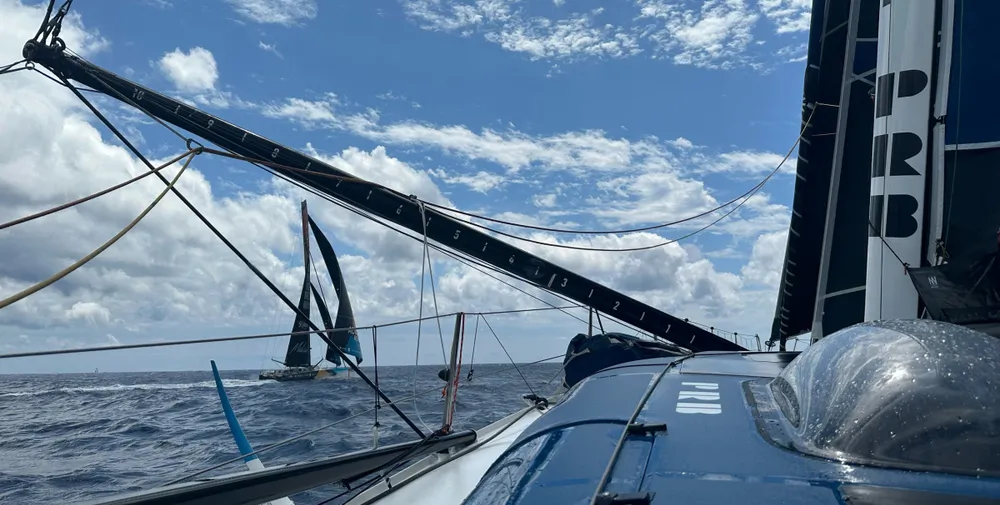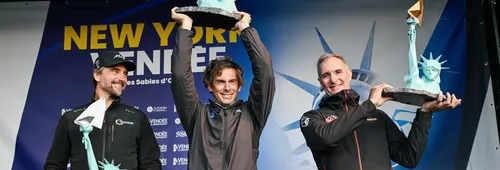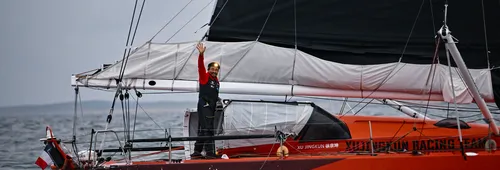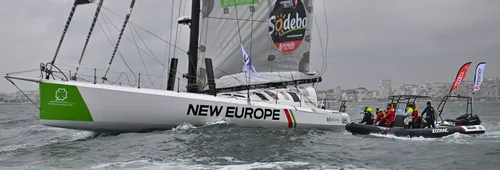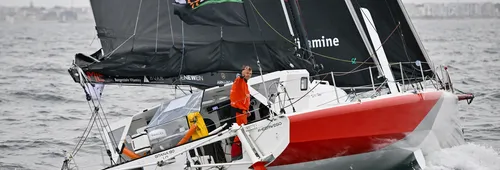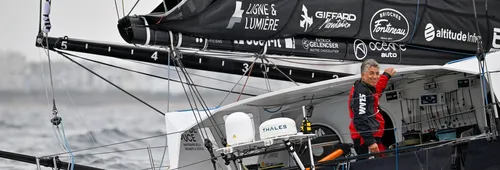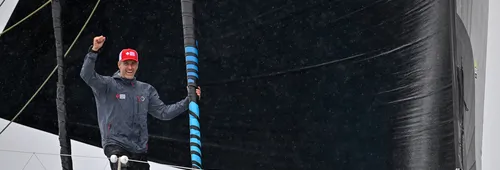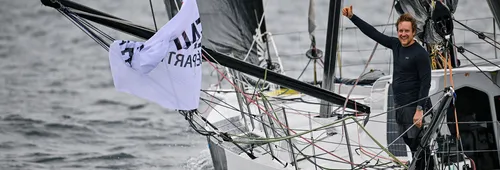“The first night and the first day of the race were not easy. I have never seen such intense storms. It was beautiful and at the same time really quite scary! Now we have finally found some wind again and it feels good. The first waypoint is behind us, which means that the transatlantic race has really begun!” enthused Sébastien Simon (Group Dubreuil) who is in the leading peloton which has Nico Lunven (Holcim-PRB) in first place this morning with Germany’s Boris Herrmann (Malizia-Seaexplorer) just over a mile and a half behind.
“The next few hours will be relatively smooth but we expect a complicated night between Saturday and Sunday,” added the skipper whose home is in Les Sables d’Olonne.
The leaders are heading east, sailing downwind at speeds of around 20kts catching up with a small depression which they have already negotiated once 24 hours ago,
“It promises to be a little tough, reaching. We will have to push the boat a little, without breaking it or me and then to manage the stormy squalls ahead of this front,” said Simon “Now the boat is on rails. It’s a good time to rest a little, even if you have to keep up the pace,” added Simon, .
“They are sailing with the accelerator pressed hard. The wind is stronger than expected in the area and the differences in speed between the different boats are quite obvious,” analyzes Hubert Lemonnier, the Race Director.
Yesterday the fleet was grouped in less than 50 miles yesterday evening, now it is stretched over nearly 200 miles, with a clear advantage for the most powerful (and most recent) machines which can finally bring out their full potential.

